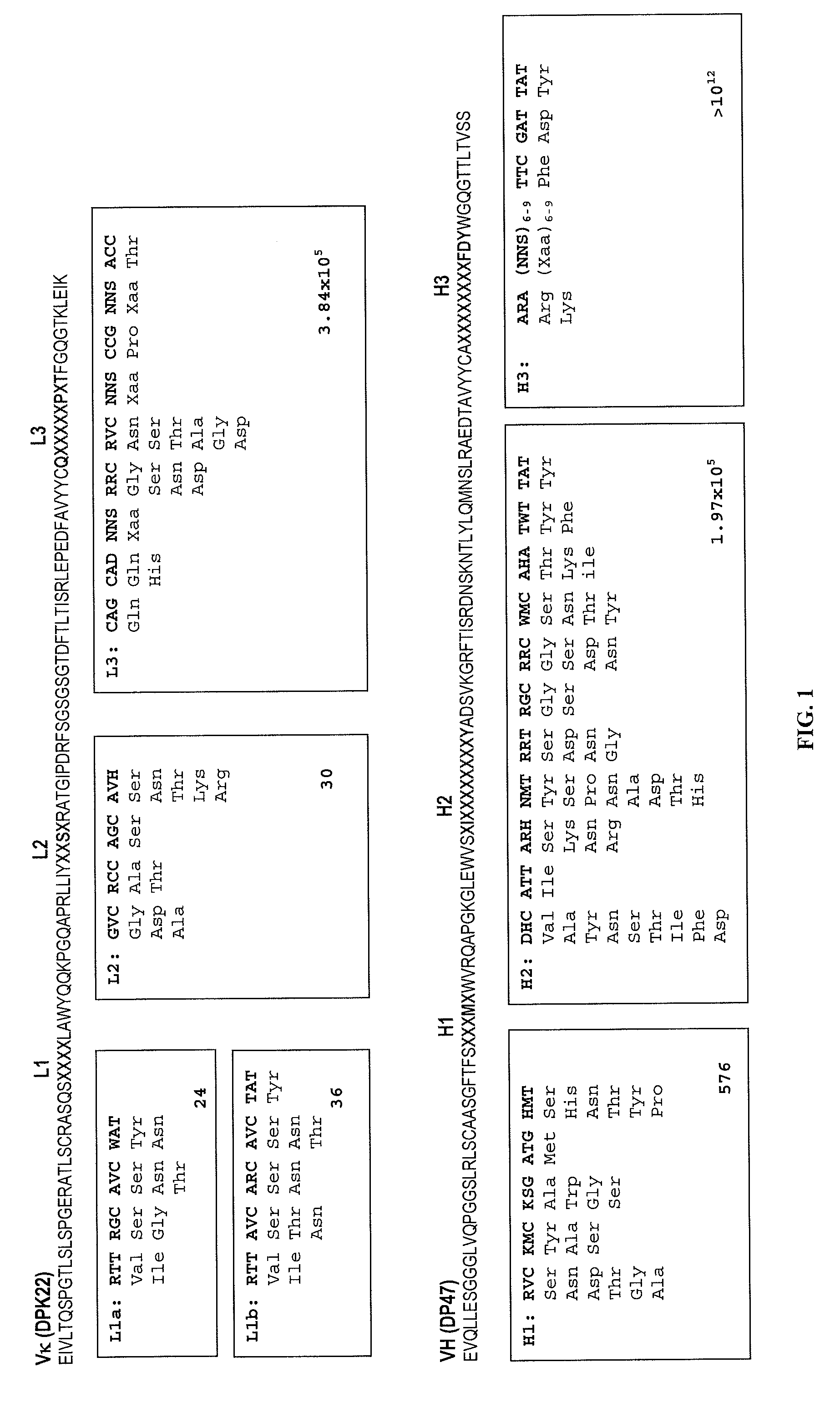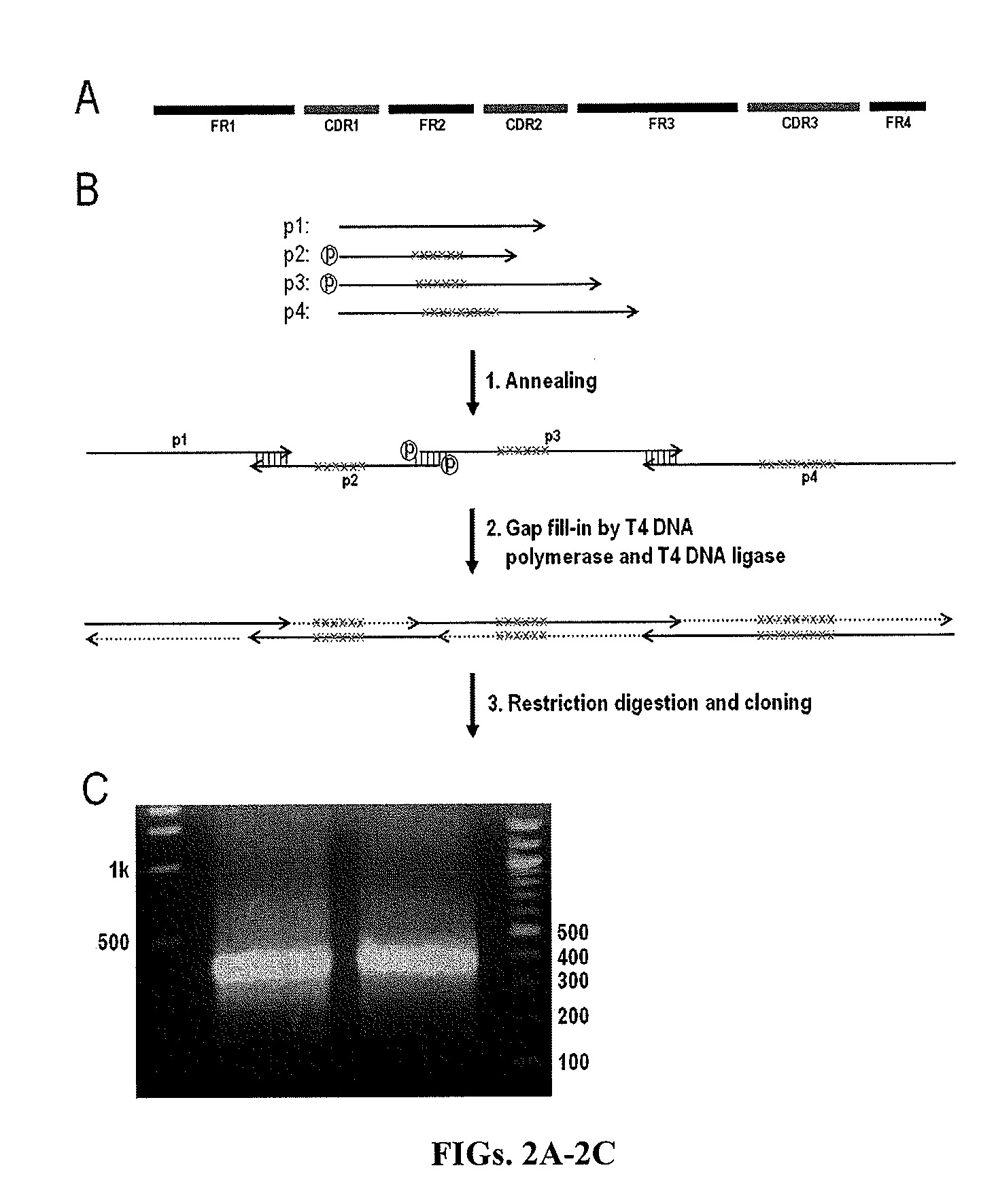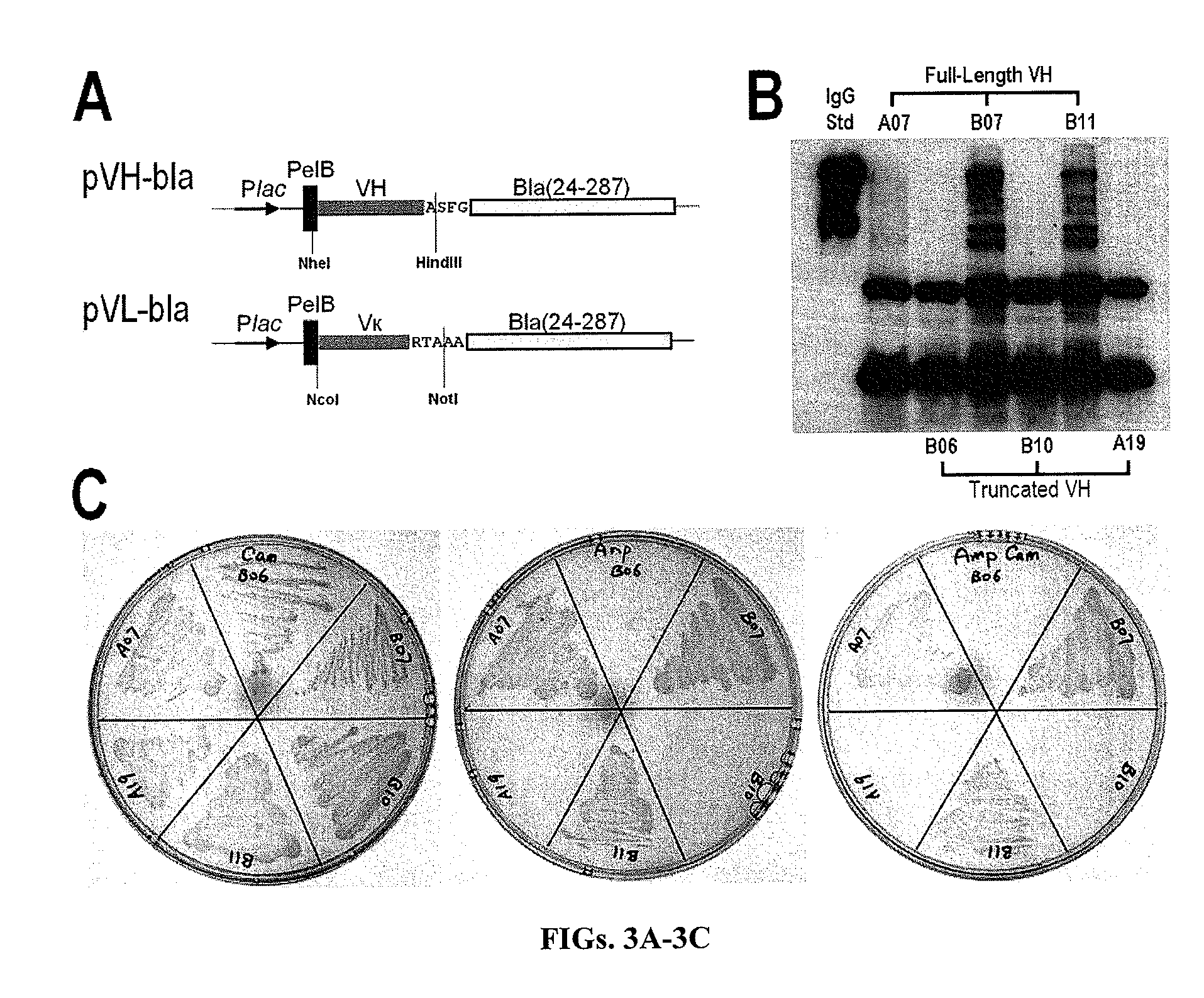Methods for creating antibody libraries
a technology of antibody library and library, which is applied in the field of combinatory library construction, can solve the problems of limiting the functional library size, time and cost consuming related to the technology, and lack of efficacy and rapid clearance due to the production of human anti-mouse antibodies by patients
- Summary
- Abstract
- Description
- Claims
- Application Information
AI Technical Summary
Benefits of technology
Problems solved by technology
Method used
Image
Examples
example 1
Design of Antibody Complementarity Determining Regions (CDRs) Amino Acid Diversification
[0124]The antibody variable domain germlines, VHIII (DP47) and VHIII (DPK22) were used as the framework to construct synthetic antibody libraries. DP47 and DPK22 were chosen because (1) they are highly prevalent among all human antibody germlines (i.e. 12% and 29% respectively) (Knappik 2000); and (2) it has been demonstrated that these frameworks are well expressed in bacteria (Ewert 2003). The diversity of synthetic antibody libraries was generated by randomizing all the six complementary determining regions (CDRs) on both VH and Vκ. Firstly, the diversity occurring in natural human antibodies were analyzed using the KabatMan antibody database (http: / / www.bioinf.org.uk / abs / kabatman.html). This database has sequences of 6014 light chains and 7895 heavy chains, and it also provides a convenient query language to survey the data (Martin 1996). For example, there are 1626 human VHIII antibody seque...
example 2
Design and Synthesis of Polynucleotides
[0128]Codon usage of the framework regions (FRs) was optimized for E. coli expression by using the web server Optimizer (http: / / genomes.urv.es / OPTIMIZER / ) (Puigb, 2007). Codon optimized sequences of VH / Vκ genes were split into 4 sections (or 4 polynucleotides s), each between 90-140 bases in length. Upon annealing of the 4 polynucleotides they form overlap segments located in FRs, while leave the CDRs which are encoded as “gaps” to be filled following polymerization. Specifically, the polynucleotides VH1 / Vκ1 encode for FR1, and polynucleotides VH / Vκ 2, 3, and 4 encode for CDR1, 2, 3 respectively, with the overlap segments at FR1, FR2, and FR3 with adjacent polynucleotides. In this design, two polynucleotides Vκ2a / b were used to encode CDR-L1 having different length (11 or 12 amino acids for CDR-L1), and similarly, 4 polynucleotides VH4a / b / c / d were used for CDR-H3 with 9, 10, 11, and 12 amino acids. The length and location of overlap segments be...
example 3
Gene Assembly of Antibody Variable Domains (VH and Vκ)
[0129]As demonstrated in FIGS. 2A-2C, there were two steps for V gene assembly, annealing and filling-in. The annealing reaction was typically carried out at the scale of 100 pmol in a volume of 100 μL. For CDRs encoded by multiple primers, DNA were used at equal molar (i.e. 25 pmol of VH4a / b / c / d, and 50 pmol of Vκ2a / b). The primers were mixed in 50 mM NaCl, 10 mM Tris-HCl (or alternatively in 1×NEBuffer 2). DNA annealing was preformed in thermocycler as the program was set as: denature of DNA at 95° C. for 5 min, then 70 cycles of 1 min incubation, at the temperature decreasing 1° C. for each cycle (94° C. to 25° C.), and finally kept at 4° C.
[0130]After annealing, the DNA samples were treated with T4 DNA polymerase and T4 DNA ligase simultaneously to fill-in the gaps on the double-stranded DNA. T4 DNA polymerase, instead of other polymerase (e.g. Klenow, Taq), was chosen, because it does not displace the primer on the growing s...
PUM
| Property | Measurement | Unit |
|---|---|---|
| Fraction | aaaaa | aaaaa |
| Fraction | aaaaa | aaaaa |
| Fraction | aaaaa | aaaaa |
Abstract
Description
Claims
Application Information
 Login to View More
Login to View More - R&D
- Intellectual Property
- Life Sciences
- Materials
- Tech Scout
- Unparalleled Data Quality
- Higher Quality Content
- 60% Fewer Hallucinations
Browse by: Latest US Patents, China's latest patents, Technical Efficacy Thesaurus, Application Domain, Technology Topic, Popular Technical Reports.
© 2025 PatSnap. All rights reserved.Legal|Privacy policy|Modern Slavery Act Transparency Statement|Sitemap|About US| Contact US: help@patsnap.com



